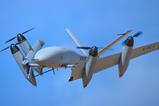The first Western-provided fighter jets are poised to arrive in Ukraine in the coming weeks.
That was the word from several top NATO officials, who assembled in Brussels on 13 and 14 June for a meeting of defence ministers. Among the agenda items were discussions of how Western countries should continue providing training and materiel support to the Ukrainian armed forces.
Likely the most anticipated element of that support package are Lockheed Martin F-16 fighters, which multiple NATO member states have pledged to supply to Ukraine.
US secretary of defense Lloyd Austin on 14 June said that could happen before the end of the summer.
“We’re working hard to get Ukraine to have F-16 capability this summer,” Austin said from Brussels. “I’m optimistic that that will happen.”

While the USA is not directly providing its own aircraft, Washington has approved the transfer of the American-built jets and the US Air Force (USAF) is helping to train Ukrainian aviators and maintainers to operate the fourth-generation F-16.
The Pentagon’s top officer, USAF General Charles Brown, confirmed his service is working toward certificating the first crews and aircraft this summer.
“We’re working diligently to make sure that the Ukrainians have what they need, and the goal is to get them those F-16s this summer,” Brown said from Brussels on 13 June.
The USA is joined in the so-called fighter coalition by the Netherlands and Denmark, which were the first countries to commit their own fighter aircraft to Ukraine. Norway and Belgium have subsequently pledged aircraft from their fleets.
While the exact number of F-16s headed to Ukraine remains unclear, the number could approach 100 of the single-engined aircraft. The Netherlands and Denmark in 2023 committed 42 and 19 aircraft, respectively. Belgium in May pledged 30 of its F-16s to Kyiv, while Norway allocated two jets to the effort in January.
While not all of those will be delivered at once, that marks a total commitment of 93 F-16s for Ukraine’s war effort. Notably, the four countries providing aircraft are in the process of acquiring and fielding the more-advanced Lockheed F-35 fifth-generation fighter.

A diplomatic official familiar with the matter tells FlightGlobal that no Ukrainian pilots have yet completed the training, which is being conducted in Denmark, the USA and at a new NATO F-16 training centre in Romania, where some of the donated jets are already based.
The USA and NATO have previously said the exact date of the transfer will be determined by progress made in training Ukrainian crews, the first of which appear to be nearly ready.
“When allies deliver F-16s, this is partly about the short-term needs, but it has to be integrated into the long-term structure of the Ukrainian armed forces,” NATO secretary general Jens Stoltenberg said in Brussels on 14 June.
“NATO will oversee training of Ukrainian armed forces at NATO training facilities in allied countries, support Ukraine through the planning and coordination of donations, and manage transfer and repair of equipment,” Stoltenberg, the former Norwegian prime minister, added.
Notably, some F-16 maintenance may continue taking place within NATO territory after the jets are transferred to Ukraine. Officials in Kyiv have floated the idea of stationing reserve and training aircraft outside Ukraine to protect from Russian attack.
“There are a certain number of aircraft that will be stored at secure air bases, outside of Ukraine, so that they are not targeted here,” Ukrainian Brigadier General Serhiy Holubtsov told US-funded media outlet Radio Free Europe/Radio Liberty on 10 June. “This will be our reserve in case of need for replacement of faulty planes during routine maintenance.”
Moscow has intimated such aircraft could still be considered legitimate targets by Russian forces.
The developments come as France, Germany and the USA dropped long-standing restrictions on using donated weapon systems to fire into Russian territory, in response to a cross-border offensive near the Ukrainian city of Kharkiv.
Stoltenberg has affirmed his support for the decision, saying restrictions on firing so close to the frontier ”would really undermine Ukraine’s ability to defend itself”.
The centre of Kharkiv lies just 22 miles (35km) from Russian territory.































